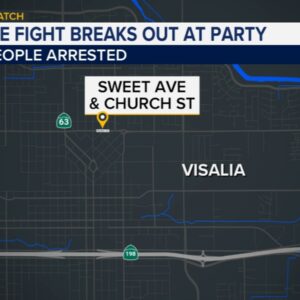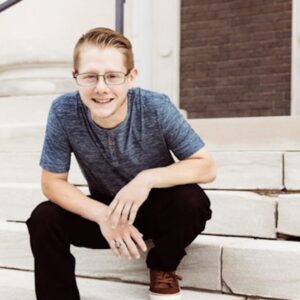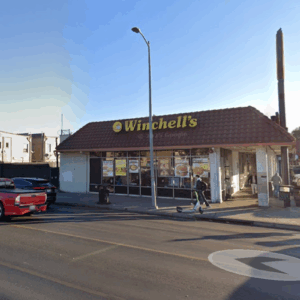Note to readers • The following story was developed by The Utah Investigative Journalism Project and the University of Utah’s “Cold Case” class investigating unsolved murders in the state. Students helped write and report the story through interviewing sources and filing records requests.
There was a lot Nell Arbon didn’t know about her intensely private son Kerry. He had come to live with her in the basement of their Orem house in his late 20s and kept to himself.
She knew he would take weekend trips to Salt Lake City, sometimes disappearing for hours in the middle of the night only to discreetly return in the morning. While she didn’t know where he went, she could always count on him to return, usually in time for church on Sunday mornings.
One weekend in September 1991, he didn’t come home. She reported him missing to Orem police on the afternoon of Sept. 11. Around that same time, a British tourist cycling through Memory Grove in Salt Lake City stepped off the road, into the brush — and found Kerry G. Arbon, 40, dead from multiple gunshot wounds.
It appeared he had been there since Sunday night, police later said. His red, four-door 1984 Toyota Camry was missing.
The execution-style murder of Kerry Arbon ended a life and exposed a secret.
At over six feet tall and 200 pounds, he stood out in a crowd, but he could also blend in to very different environments. He was an accomplished church organist, a former student and later a music teacher at Brigham Young University, and a son who cherished services at his Orem ward of The Church of Jesus Christ of Latter-day Saints.
He also was a closeted gay man who used the alias Doug Sorensen while visiting Salt Lake City on the weekends, where witnesses recalled seeing him at gay bars like the former Radio City Lounge or in Memory Grove, where gay men often sought companionship.
“His church meant a lot to him,” said Cordon Parks, a semiretired detective who still oversees cold cases for the Salt Lake City Police Department. “Which of course, leads to the secrecy that he died under, which has made this case really, really hard to investigate.”
But police reports also raise questions about the quality and scope of the original investigation. Despite the harassment and assaults that Utahns were committing against gay people at the time, there’s no indication in the reports that police pursued the possibility that Arbon’s murder was a hate crime. Witnesses reported that white supremacists, known to harass gay men in the area, were active in Memory Grove around the time of the murder — but police never tried to interview them.
Evidence from Arbon’s vehicle included a notebook full of potential leads, including names, phone numbers and license plate numbers, none of which were followed up on, according to the reports. Parks also has spotted a possible person of interest in the records who was never contacted. And the reports lack key documentation that puzzles Parks and Jerry Mendez, a retired Salt Lake City detective who briefly worked on the Arbon case.
(Trent Nelson | The Salt Lake Tribune) Cordon Parks, a semiretired detective who oversees cold cases for the Salt Lake City Police Department, in May.
Still, they defend the work done at the time, noting that technology was less advanced and handwritten recordkeeping was less detailed. Officers in the 1990s “did a lot of stuff and they didn’t write it down if they pursued a lead and it didn’t really pan out to be anything promising,” Parks said. “They’re very busy and they’re just rushing off to the next lead.”
‘You’re going to lose all of it’
In the 1960s and 1970s, Latter-day Saint leaders held that homosexuality was deviant and curable. In the early 1990s, the church told members that homosexual thoughts were immoral and could and should be overcome by faith and “sincere repentance.” Today, the church teaches that feelings of same-sex attraction are not a choice nor a sin, but behavior remains subject to potential church discipline, and it opposes same-sex marriage.
While advocates were focused in the 1990s on encouraging people to come out, “we also had to realize that a lot of them didn’t feel safe doing that,” said Michael Aaron, now the publisher of Q Magazine, Salt Lake City’s only LGBTQ-focused publication. In the 1990s, he helped set up the Anti-Violence Project, which tried to raise awareness about hate crimes before they were defined in Utah law.
With gay Latter-day Saints, “you’re talking about, not only losing, you know, Mom and Dad and your family but your entire life,” Aaron said. “ … You were basically threatened with, you’re going to lose all of it, everything you have ever believed about yourself and your future and your salvation.”
(Trent Nelson | The Salt Lake Tribune) Michael Aaron, publisher of Q Magazine, in Salt Lake City on Wednesday, July 9, 2025.
Arbon, raised in the Latter-day Saint faith, spent his early years on his family’s farm in Burley, Idaho, said Kathie Driggs, his three-years-younger sister.
She and her brother saw the organ in the Salt Lake Tabernacle when he was about 8 years old, she said, and he confidently told his mother he would play it someday. After that, Nell Arbon started driving him two hours each way from Burley to a music teacher in Boise every Saturday.
“My brother was the stake organist from the time he was 12 years old until he graduated from high school,” Kathie Driggs said.
She fondly remembers his childhood creativity. One of her favorite memories is a time Arbon made a mini-hotel out of large cardboard appliance boxes and gave her a tinfoil key to her room. Another is laughing and jumping with him on a mini-trampoline while listening to quirky Christmas music on vinyl records.
The family moved to Oregon in 1963 after buying The Frost Motel in the small town of Ontario. Arbon took the initiative to clean the basement and turn it into a dance studio. At 13, Arbon began to teach ballroom dance to children in the neighborhood, another skill he picked up quickly, she said.
He had a wide circle of friends and was even class valedictorian. “I was just in awe of him,” Driggs said.
Arbon served a two-year mission in Switzerland, then enrolled at BYU in the mid-1970s. Gordon Johnston was in the music program with him, and recalls how thrilled Arbon was to play devotional programs for tens of thousands of students at the school’s Marriott Center.
“He really loved playing those devotionals,” Johnston said. Johnston, who is gay, said he never suspected Arbon shared his orientation when they were classmates at BYU, and he didn’t reveal his own.
Arbon’s family told police that Arbon quit studying at BYU a few hours short of earning a degree but later taught students there. In the early 1980s, Arbon was teaching the organ to BYU student Val Weight, who remembers him as demanding.
“He managed to inspire me to do my best,” Weight said.
A neglected notebook?
Arbon’s love of music was reflected in a journal police discovered in his Camry, when it was found near West High about a month after he was killed. He had jotted down song lyrics, the names of prominent organists and references to classical work. “Caprice in B minor,” he wrote, referring to a composition by Italian composer Niccolò Paganini. “Rather fun!”
He also drew small boxes and filled them with license plate numbers, most with vehicle descriptions like “red VW Rabbit.” Some entries included names and phone numbers; others had descriptions like “computer science guy,” “florist guy,” “accountant guy,” and “nice guy.”
It’s possible Arbon documented the plate numbers of men he met up with “in case something happened,” Parks said. Less than a year before Arbon’s death, in November 1990, he had called Salt Lake City police from a spot on State Street to report that a man he had picked up “for unspecified reasons” had threatened him and “tried to strong arm” him, according to a police report.
He also may have been trying to avoid undercover police. In October 1984, officers in an unmarked vehicle near North Park in Provo saw a nearby car flash its brake lights. “It has been this officer’s experience that homosexual contact is often made in this manner,” one later wrote.
One officer walked into the park while the other stayed in the car, which Arbon approached, a police report said. Based on his conversation with the officer, Arbon was arrested on suspicion of solicitation of a sex act, the report said.
Five months later, a BYU officer briefly detained Arbon after he rubbed his foot against the foot of another officer in a neighboring stall in a men’s restroom in the Wilkinson Student Center, according to a faded campus police report. Driggs said the family learned after Arbon’s death that he had been banned from campus but they didn’t know why, and it’s not known if the ban was connected to this incident.
Or sometimes Arbon may have been tracking the license plates of men he saw while driving and hoped to find them again, Aaron mused. “You have to think that there’s not a lot of other ways for him to find people to be intimate with,” he said.
Police also found clothes, books, a water jug and other items in the Camry, indicating Arbon “was spending a lot of time in his car,” Parks said. Both police and the family found receipts with the name Doug Sorensen, which Arbon used to stay in hotels, Parks said.
There were more than 100 plate numbers in the journal, but police reports show no evidence that the car owners or men named in the journal were contacted.
Mendez said that to the best of his judgment, he believes the license plates were not looked into simply because of how difficult it was to sort through that quantity of information, with the technology police had at the time. Still, he said, a typical homicide report should have shown documentation of the owners of all the license plates.
The cold case team has tried to research the past owners of license plate numbers but found the state no longer has those records, Parks said.
The police theory
Parks believes Arbon, who was 6 feet, 4 inches tall, was killed during a robbery gone wrong. “I think [the killer] just panicked, probably because [Arbon] was too big to handle and he just started shooting,” Parks said. “I think it’s just as simple as that.”
He suspects the killer then took Arbon’s car keys and fled. Dried mud found on the floor of the Camry on the driver’s side indicates that his killer may have driven his car away, Parks said.
But he doesn’t rule out an ambush. “It’s not outside of the realm of possibilities that two guys were going to rob Kerry Arbon and one of them went up to that site and was hiding out, waiting for him,” Parks said.
While Utah didn’t have a law that legally defined hate crimes in 1991, advocates were using the term. Buried in the Salt Lake City Police Department Annual report for 1990 was a note that the gay community believed that hate crimes were not being investigated, with the report countering that most crimes against the community were never reported in the first place.
Aaron recounted a conversation with a police officer who he said was sympathetic to the gay community, yet still bluntly told him: “Yeah, if it’s a gay crime, anti-gay crime, we will probably spend less time on it and that’s just the way it is.”
Gay people in Salt Lake City were harassed and attacked in popular gay cruising areas like Memory Grove and Liberty Park. Mendez, the retired detective who worked briefly on the Arbon case, said some vice officers targeted gay citizens as an easy way to pass their patrol compared to looking into prostitution and pornography.
The attitude was, “Let’s go down to Liberty Park, get our quota and arrest the gays and then go have some beers,” Mendez recalled.
The LGBTQ community was mistrustful of what they saw as an indifferent, if not homophobic, police force at the time, Aaron said. Members of the Anti-Violence Project would hand out whistles with the project’s number engraved on them to encourage gay men to report crimes.
“They could call that phone number if they were attacked and we would be an intermediary between them and the police,” Aaron said. “But we couldn’t even get people to call that number.”
(Trent Nelson | The Salt Lake Tribune) A whistle that was part of an early 1990s public safety campaign by the Anti-Violence Project, in Salt Lake City on Wednesday, July 9, 2025.
Aaron estimated that the project handed out over a thousand of those whistles without any luck. They tried hanging flyers up in areas known for cruising by the gay community, even from branches of trees, but that didn’t encourage reporting, either.
At 76, Mendez still sports a neat crew cut and mustache. It was true that Utahns sometimes committed “gay bashing,” he said — such as jumping people outside gay bars like the former Radio City Lounge in Salt Lake City. The department saw some cases where skinheads used “curbing” during assaults on gay people, he said, describing it as pushing a person so they were draped over a street curb, “then they’d stomp them. So using the curb to add additional injuries to their body.”
While he didn’t remember much of the small role he had in the Arbon case, Mendez said officers always took violent crime investigations seriously, no matter who they were committed against. Parks agrees.
Still, Parks said it’s frustrating to see that leads don’t appear to be documented in the Arbon file, and Mendez acknowledged that key leads did not appear to have been chased. Parks noted there was a parolee living near where Arbon’s car was abandoned who hadn’t been seen around his apartment for days when police were canvassing the area. Officers never followed up on tracking him down.
“They did what they could,” Parks said, noting that officers spent a long time tracking down Arbon’s missing vehicle and processing evidence. “They didn’t close it in two weeks. He was killed in September and they didn’t close it until the summer, so they gave it a good long time.”
Skinheads in Salt Lake City
(Rick Egan | The Salt Lake Tribune) United White Workers chant at the Wallace F. Bennett Federal Building in Salt Lake City on Sept. 2, 1991.
Perhaps the most unusual item in the Arbon police reports is a document called a field card. Mendez said the cards were a tool police used to write down a quick profile on a subject whom an officer deemed to be unusual, or who may have appeared near or at a crime scene, since it wasn’t easy to run a quick background check back then.
A field card in the Arbon case file lists a person by name who is described as having a swastika tattoo as well as a tattoo of a dragon and another of a skull with feathers. The Utah Investigative Journalism Project is not identifying the name since it may have been falsely given and was also a common name. It’s also unclear how accurate the information on the card is, aside from the officer’s note about the observed tattoos.
Mendez said ordinarily a police report would have another document to explain why the field card was taken in the first place. There was no such report in Arbon’s file.
The swastika is often used by white supremacists, who were active in Salt Lake City at the time of Arbon’s killing. The week before, on Sept. 2, 1991, a small group of white supremacists marched down State Street dressed like stormtroopers, shouting and hoisting fascist flags.
In front of Wallace F. Bennett Federal Building, the group threw the Nazi salute and chanted “sieg heil” in unison, while anxious police held back a combative counterprotest.
(Rick Egan | The Salt Lake Tribune) Counterprotesters pursue a crew of neo Nazis during a United White Workers march along State Street in Salt Lake City on Sept. 2, 1991. The groups exchanged words but no violence occurred.
David Dalby was one of the founding members of the United White Workers Coalition who spearheaded the march, and today, he has shed his hate-driven politics, he said.
He grew up in the punk movement, and said he got pulled into skinhead groups at a time when his father had recently left, and his mother was suffering from depression and barely left her bedroom. “I didn’t have a feeling of family, you know, so that’s what got me attracted to it,” Dalby said.
The skinheads were a community that shared a purpose. In the midst of violent federal crackdowns on separatists at Ruby Ridge and Waco, Dalby said, it was easy for a skinhead “to daydream that you’re a freedom fighter against this evil power.”
White supremacist beliefs led them to protest against minority groups, including the gay community, he said. He recalled a time when he and his friends stormed a town hall in Cedar City to disrupt an event promoting the safety of gay people. Another time his group showed up to a demonstration in Murray Park to harass gay people while hoisting a homemade Nazi flag tied to a lead pipe, he said.
But the confrontations, Dalby said, were all bluster; he says his group never hurt any gay community members and only got into fights with rival groups that would attack skinheads on sight.
On the same day that Dalby’s group marched in Salt Lake City, skinheads in Memory Grove harassed a man in his car, according to news coverage. They started calling him derogatory names, police said, and in response, the man hit a skinhead with his car. The injured young man, according to a police report, “admitted he was there to speak his mind to the homosexual persons in the grove.”
The hit and run happened nine days before Arbon’s bullet-ridden body was found in Memory Grove.
Police interviewed multiple witnesses who reported seeing skinheads near Memory Grove around the time of the murder. In one police report, a witness remembered seeing a car of skinheads leaving City Creek Canyon on the Sunday Arbon went to Salt Lake City, and it said the witness believed one of them had been recently interviewed on TV.
Yet there are no records in the police reports of interviews or conversations with anyone from these white supremacist groups. Parks said he doubts Arbon was killed by skinheads.
( Al Hartmann | The Salt LakeTribune) The Salt Lake City Police Department put up billboards in 2017 asking for information about cold cases. This billboard on 600 North approaching the Interstate 15 onramp highlighted Kerry Arbon, found dead in Memory Grove in Salt Lake City on Sept. 11, 1991.
Mainstream hate
The year Arbon died, Democratic lawmaker Frank Pignanelli took up the challenge to pass hate crimes legislation in Utah. “I would say the vast majority of Americans and Utahns did not want gay and lesbian citizens to be hurt,” Pignanelli said.
Still, he added: “I’d have people [at first] coming up to say, well, we can’t support your bill for sexual orientation. Does that mean people [who] like small kids or whatever? I said, ‘No.’ I had to educate [them on] just what sexual orientation was.”
Hate crimes legislation passed in 1992 by focusing on the intention of the perpetrator, rather than who a crime was committed against. Nearly 30 years later, Utah eventually updated its hate crime laws with the 2019 Victim Targeting Penalty Enhancements bill. It provides for stiffer punishments for criminals who target a person or property based on “personal attributes” like race, sexual orientation, political expression, gender expression and more.
Looking back, Aaron sees progress. There is less violence against LGBTQ+ Utahns, but that doesn’t mean the community feels safe, he said, pointing to recent political targeting of the transgender community.
Parks and Salt Lake City police continue to try to solve Arbon’s murder, using today’s technology and with efforts — from billboards to podcasts — to keep it in the public eye. “It’s useful to have this case not just pass away into oblivion,” Parks said.
The killer “may have talked about it to somebody,” he added. “Publicity is always a good thing on an unsolved case.”
Dalby, the former white supremacist, is still a punk rocker with a bright-green mohawk — but now with more life experience, at age 53 with an ex-wife, two children, four cats and a catio.
He’s struck that rhetoric reemerging today isn’t very different from what white supremacists were pushing back in the 1990s.
“A lot of stuff we were saying as skinheads,” he said, “now just regular people are saying.”
Note to readers • This story is available to Salt Lake Tribune subscribers only. Thank you for supporting local journalism.




